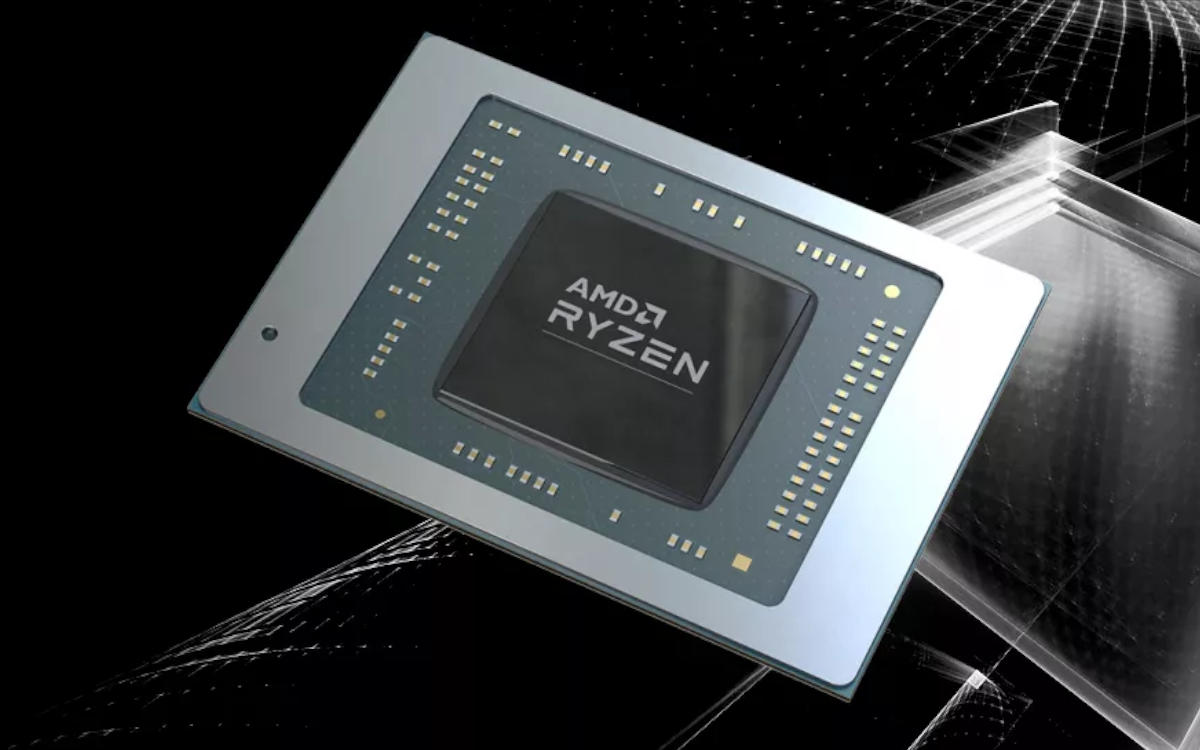
AMD has detailed its new Zen 5-based processors at a press and analyst event in Los Angeles. The various presentations and sessions with its engineers have provided details on the desktop processors, the Ryzen 9000, which we covered in this post, and also more information on the notebook models, the Ryzen AI 300, codenamed Strix Point, which we will cover here in this article.
The highlights of AMD’s new generation of notebook processors include the use of Zen 5 cores, which already bring advances that we mentioned in this article here, combined with an improved integrated graphics and a neural processing unit (NPU) turbocharged with the new capabilities of the XDNA 2 architecture. We will detail more about each of these parts of the product in this article.


AMD Ryzen AI 300 (Strix Point)
Strix Point processors also use the Zen 5 technology found in desktops, but with modifications. While desktop models have basic processing cores and integrated graphics, notebook models will feature additional structures such as an NPU to accelerate AI, more robust integrated graphics to ensure good performance even without a dedicated graphics card, and a new organization of Zen 5 processing cores, better suited to the needs of notebooks.

The AMD Ryzen AI 300 processors are structured into two processing clusters. One cluster is focused on maximum performance, consisting of up to four cores with a larger amount of cache and also higher maximum clocks.
The second cluster is focused on performance. It has a maximum of 8 cores with higher density, less cache and lower operating frequencies.



AMD has highlighted that this arrangement is different from the big.LITTLE logic of ARM processors, or from Intel’s efficiency and performance cores. All cores are Zen 5 and have the same IPC. This means that there is no penalty on performance or need to adapt the functions of any instruction, regardless of which core it ends up “falling” to.
The company says it worked closely with Microsoft to optimize Windows to use this heterogeneous Strix Point construct. A persistent, low-performance task, such as an app running in the background, will run on the efficiency cluster. If you open a program and need a burst of performance, the performance cluster will be allocated to that task.
AMD IA
A major change in the new generation of Ryzen processors is the more powerful NPU. With Windows requiring 40 TOPS (trillion operations per second) to deliver its CoPilot+ features, the NPU has been beefed up to meet this demand.

This puts AMD in the lead, despite the comparative bars being quite… at best, outdated. Qualcomm already claims that its X Elite processors, in their NPU, deliver 45 TFLOPS, while Intel’s Lunar Lake has already announced that they reach up to 48 TOPS. Values much closer to AMD’s 50 TOPS bar, than it appears to be according to this chart. And all above the 40 TOPS required by CoPilot+.
For this performance range, one of the most relevant features is the introduction of Block FP16.
In AI cycles, the precision used is relevant. Using the high precision of FP16 increases the processing time and the energy consumption to perform the work. FP8 significantly reduces the time and energy required, but the drop in precision can compromise the final result.
Block FP16 is a solution that AMD has presented as the “best of both worlds”. It maintains a performance level similar to FP8, but at the same time delivers precision close to FP16 processing.


The “miracle” works by making more efficient use of instructions, grouping by similarity and discarding some tests along the way. The result is a much lower duty cycle, and efficient sampling means that Clock FP16 achieves over 99% of the accuracy of FP16, but runs in roughly the same time as FP8.
XDNA 2 dos AMD Ryzen AI 300
The architecture used in the NPU is the second generation XDNA. This is a technology that handles data flow spatially, in an array of processors that can efficiently distribute resources and functions among them.

The new generation of XDNA delivers a 5x leap in computing power, partly achieved by increased performance of the computing units, partly as a result of increasing these units from 20 to 32.

The new structures are more efficient, delivering 2x more performance per watt consumed, and allow the shutdown of entire processing columns during times of low load.


These speakers are also programmable and versatile. For example, you can dedicate one set of them to image processing, blurring a camera background in real time, while other units do real-time audio processing and a few more are still available for other activities.
RDNA 3.5 dos AMD Ryzen AI 300
For integrated graphics, we have the introduction of RDNA 3.5 technology. As the name suggests, it is an evolution over RDNA 3, not a major transformation, but there are still considerable gains here.

AMD has improved the sensors and operation of the iGPU, seeking to simultaneously increase performance and efficiency. According to the company, there is a 32% performance gain at the same TDP level. Efficiency has also been increased on all fronts, with more performance per watt consumed and even performance per bit transferred from the memories, demonstrating the company’s commitment to being efficient even in the number of times it will need to access the memory.


The RDNA 3.5 iGPU is capable of delivering 1080p at a frame rate of around 60 frames per second. At the event we were able to see an Asus Zenbook S16 notebook, measuring just 1.1cm thick and weighing 1.5kg, running an AMD Ryzen 7 HX 370 equipped with AMD Radeon 980M as iGPU.
In the demo, Lies of P ran at a very stable frame rate on medium settings at 1080p, without using features like AMD FSR. AMD estimates that the performance of this iGPU should be on par with an entry-level dedicated graphics card.
One new feature that doesn’t just affect the Strix Point models is that AMD Fluid Motion Frames will be gaining a second generation. Thus, AMD FMF 2 will expand support for generating frames for games operating in windowed mode, in addition to the Vulkan and OpenGL APIs.
Source: https://www.adrenaline.com.br/noticias/amd-strix-point-o-que-muda-com-os-amd-ryzen-ai-300-para-notebooks/


